
The flag of Swaziland (the country was called that until 2018) was hoisted for the first time on 30th of October in 1967. It shows five horizontal stripes of blue, yellow, purple, yellow and blue, in a ratio of 3:1:8:1:3. In the center of the purple stripe appears a Swazi battle shield with two lances and a fighting stick, decorated with blue tufts of feathers. The colours of the flag are set by the British Admiralty: purple = T816, yellow T820, blue T813. But there is also a transfer to the RGB color space, as red 177-12-12, yellow 255-217-0, blue 62-94-185, which would roughly correspond to the following Pantone colors: Red = pt 1797 c, Yellow = pt 109 c, blue = pt 7455 c. The blue represents peace, yellow represents the country's wealth of natural resources and the purple represents the glorious battles of the past. The tufts of feathers on the shield and fighting stick are a royal emblem. The design of the shield goes back to the Emasotsha Regiment, which used such shields. The design of the flag goes back to the flag of the Swazi Pioneer Corps, which was set up during the First World War, according to other sources only in 1941. During Swaziland's time as a protectorate of United Kingdom and the South African Republic (Transvaal), the British Union Jack or the "Vierkleur" was used. The British High Commissioner had his own flag since 1878. It was the usual flag for High Commissioners, the British Union Jack with the High Commissioner's badge in the middle, an abbreviation surrounded by a wreath with the British crown above it. Until 1931, the British High Commissioner for South Africa (abbreviation: S.A.H.C.) was responsible for Swaziland. According to the Statute of Westminster, South Africa became independent in 1931, and the High Commissioner was only responsible for Bechuanaland, Basutoland and Swaziland (abbreviation: H.C.). In 1953 only the shape of the crown changed. However, the kingdom, to which United Kingdom had guaranteed autonomy from the start, had its own flag as early as 1890. It was divided diagonally between dark blue and light blue and showed the Swazi battle shield in white in the middle. From 1894 to 1902 the flag was striped several times in dark blue and light blue, and showed the Swazi battle shield in white and black in the middle. The king's flag is similar to the national flag, especially the model with a lion at the top that was valid until 1982. From 1982 the lion appears central.
Source:
Die Welt der Flaggen,
Flaggen Wappen Hymnen,
Volker Preuß

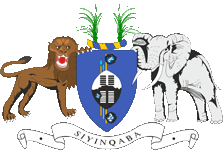
since 1968,
Coat of arms of Swaziland (Eswatini),
Source: Corel Draw 4

The coat of arms of Swaziland (the country was called that way until 2018) was adoped in 1968 on the occasion of the independence. It shows a blue blazon with the Swasi battle-shield and its decorations, like on the flag, but arranged vertically. Above the shield a yellow-blue torus with the head-decoration of the Emasotsha Regiment, the tail feathers of the Widow Bird. Supporters are a lion and an elephant, which stand for the king and the queen's mother. The motto on the banner is: "Siyinquaba" → "We are the Fortress".
Source:
Die Welt der Flaggen,
Flaggen Wappen Hymnen,
Volker Preuß

Location:
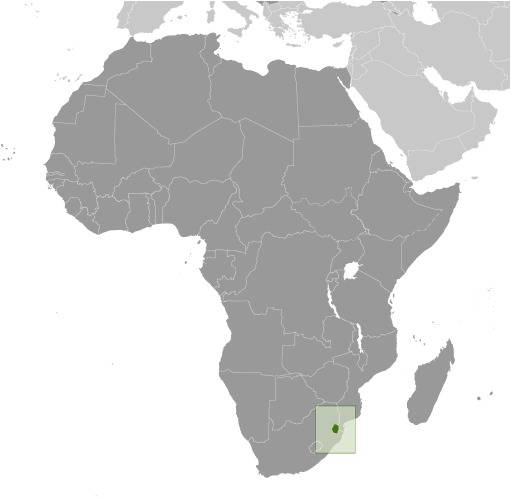
Source: CIA World Factbook
Map of the country:
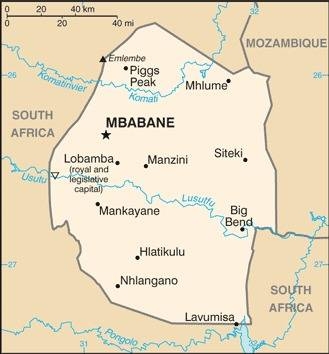
Source: CIA World Factbook
Map of the states of Southern Africa,
the former Boer's Republics and the former British Cape Colony
today's borders in red:
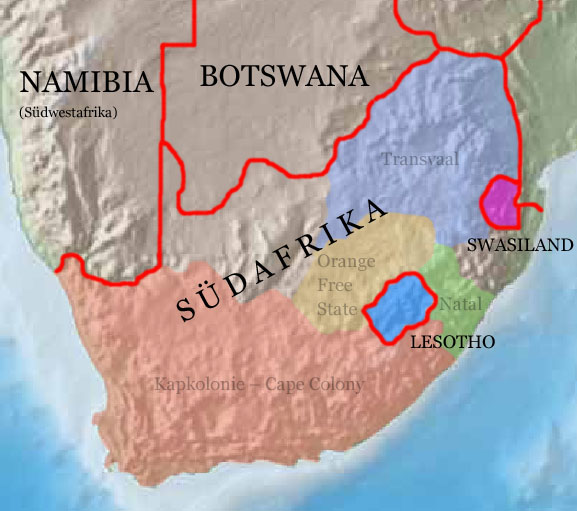
Source: Freeware, University of Texas Libraries, modyfied by: Volker Preuß

Area: 6.704 square miles
Inhabitants: 1.172.000 (2021), thereof 97 % Swazi, 3 % other Africans, Asians, Europeans
Religions: 90 % Christians (including 20 % Roman Catholic), 2 % Muslim
Density of Population: 175 inh./sq.mi.
Capital: Mbabane, 90.000 inh. (2018)
Residence of the King: Lobamba, 5.800 inh. (2018)
official Languages: English, Siswazi
Currency: 1 Lilangeni (Plural: Emalengeni, SZL, E) = 100 Cents
Time Zone: GMT + 2 h
Source:
Wikipedia (D),
CIA World Factbook

15th/16th century · immigration of the Bantu people of Swazi
1820 · the Bantu people of the Zulu under King Sobhuza (Chaka) attacks the Swazi, evolution of the Swazi-Empire
1833 · abolition of slavery in the British Cape Colony
1836–1885 · the Boers leave Kapland in long treks towards east and northeast and establish various Boer's republics
1868 · immigration of the first Boers in Swaziland
1877 · immigration of British people
1877 · fixing of the today’s borders
1894 · Swaziland becomes a protectorate of the South African Republic (Transvaal)
1899–1902 · Boers War, United Kingdom submit the Boer's States of Orange Free State and Transvaal, both become British colonies
1903 · Swaziland becomes a British protectorate
1967 · own constitution, United Kingdom grants self administration
6th of September 1968 · United Kingdom grants independence
1973 · Swaziland becomes an absolute monarchy
19th of April in 2018 · King Mswati III. renames Swaziland to Eswatini
Source:
Wikipedia (DE),
Volker Preuß

On 19th of April in 2018 King Mswati III. renamed his country, Swaziland, in "Eswatini". The king justified his decision with the fact that there had already been confusions in Africa with Switzerland (Schweiz) and the name Swasiland or Swaziland (Land of the Swazi) has its roots in the English language and not in the more authentic official language Siswati. Therefore, the full official state name is Umbuso we-Swatini. "Swaziland" means "Land of the Swazi". The name goes back to that Bantu people, which established this state in the 19th century. Sometimes is used the name "Ngwana". This name should be awarded to the country after the independence, but this idea could not achieve.
Source: Volker Preuß


Kindly supported by: E. Hoheisel (D)
![]()

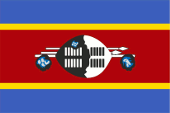


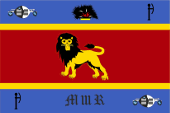
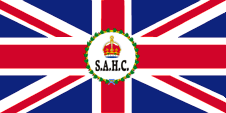

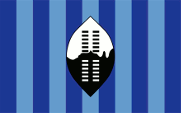
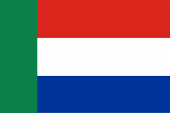
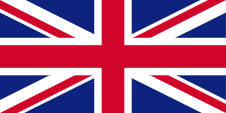



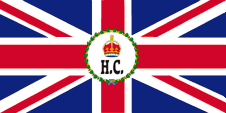
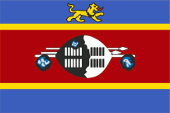




![]()
